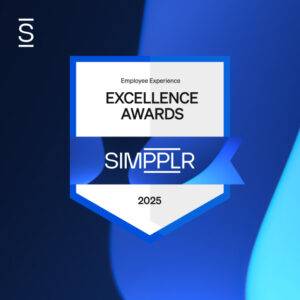Investing in employee engagement has never been higher yet scores have never been lower, how is that possible? Because most initiatives amount to an adrenaline shot – a short-term perk that is introduced to distract employees from the sad realities of their outdated workplace practices.
A perk is introduced to boost scores, but over time the effect wears off and scores go back down. Another perk is introduced, and scores go back up — and then they fall again. The more this cycle repeats itself, the more it feels like manipulation. People begin to recognize the short-term fixes for what they are and as a result are no more loyal are not willing to give any more of themselves to the organization, the organization in turn doesn’t see the ROI that it hopes to see.
It turns out that every single employee experience for every employee at every organization around the world is a combination of three distinct and unique environments that are: technology, culture, and physical space. Here’s an overview of all three employee experience environments your organization can design for.
Technology
The technological environment of the organization refers to the tools employees use to get their jobs done; hardware, software, and any other devices. Technology is the central nervous system of the organization and most concepts and themes related to the future of work such as real-time feedback and workplace flexibility are not possible without technology.
Physical Space
The physical workspace is the one we can see, touch, and taste, and smell. It’s the art that hangs on the walls, the office floor plan, the demographics of the people we work with and any physical perks we might get such as catered meals in a beautiful cafeteria, an on-site gym, or a lounge area that employees can use to unwind a bit. This also includes workplace flexibility, which is still one of the things that employees care about most. The physical space acts a symbol of your organization and helps connect employees with a sense of belonging.
Culture
We like to think of culture as the side effects of working for your organization. Have you ever seen those drug commercials that list side effects from use such as: weight gain, hair loss, skin discoloration, bleeding from the eyes, and in some cases death? Well, many of us work for organizations that have the exact same side effects! By the way, these don’t have to be bad things.
Side effects can be positive such as: feeling a sense of pride and purpose or learning and growth. So what are the side effects of working at your organization? Regardless of what you believe culture is or where it comes from, the one thing that is common is that culture is about feeling.
As part of our research on employee experience, Jacob Morgan, founder of Future Work, developed the world’s first Employee Experience Index which scores and ranks 252 global organizations across 17 variables which are grouped into 3 environments: culture, technology, and physical space. Out of all of the organizations Jacob Morgan analyzed, only 6% (15 companies) of them are Experiential, meaning they are doing an amazing job of investing in and designing for these 3 environments.














